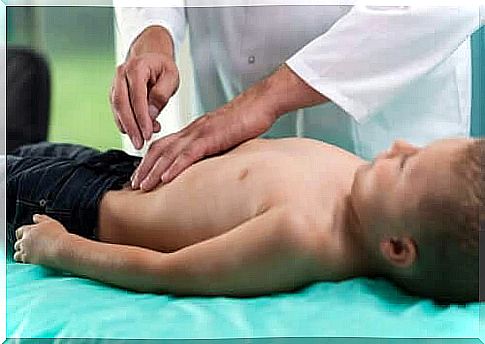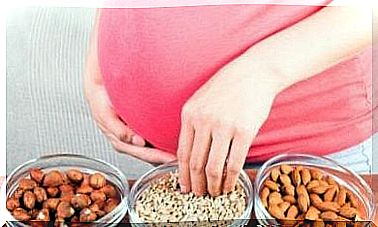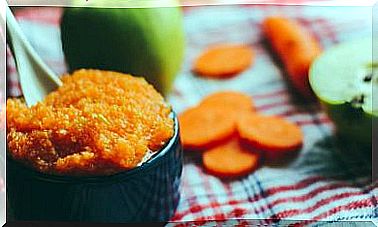Special Diet For Children With Celiac Disease

Adults and children with celiac disease must follow a specific diet in order to relieve painful and bothersome symptoms.
If your child or another child in your vicinity suffers from gluten intolerance, take a few minutes to read the following article. We teach you what you need to know about gluten – intolerant children’s unique nutritional needs.
What is celiac disease?
Celiac disease, or gluten intolerance, is a type of chronic inflammatory bowel disease. Although the exact origin is not yet known, several contributing factors have been identified. It is more common in young adults, but can also affect children.
What are the symptoms of celiac disease?
The disease is characterized by an inflammation of the mucous membranes in a specific area of the intestine. The inflammation can cause damage in the area and its course is unpredictable. The symptoms are seen in varying periods with longer or shorter durations, during which the disease stabilizes.
Celiac disease can cause symptoms and complications that affect the person’s quality of life, especially during the relapse. The most important symptoms that may occur in cases of children with celiac disease occur in the intestines and include the following:

- Abdominal pain.
- Frequent bowel movements, chronic diarrhea.
- Damage to the anal region (cracks, fistulas, abscesses).
- Fatigue.
- Lack of appetite and weight loss, which often coincide with a gassy and bloated stomach.
Proper diet for children with gluten intolerance
Epidemiological studies have shown that certain foods have protective properties while other foods aggravate the disease. For example, studies have shown that a mother’s breast milk can help prevent the onset of celiac disease. For more information on this, read this article from Alimentary Pharmacology & Therapeutics.
The reason may have to do with the benefits that breast milk contributes in terms of immunoglobulins and antibodies. Mothers produce these substances and transmit them to their children through milk.
Breast milk also contains oligosaccharides, which promote the growth of bacteria that are beneficial to the gut.
The dietary guidelines for children with gluten intolerance vary. What a gluten intolerant person should and should not eat depends on whether he or she is in an asymptomatic period or is in the middle of a relapse.
Dietary guidelines during remission or the asymptomatic period
Food to avoid
- Foods that cause gas in the stomach, such as kale and other leafy vegetables, cauliflower, whole grains, carbonated drinks and legumes in their skis.
- Charcuterie.
- Butter, milk and cheese.
- Foods containing sorbitol: sweets, chewing gum and soft drinks.
Food to include in your child’s diet
- Fat fish. Omega-3 has a protective effect against celiac disease because it is anti-inflammatory.
- White fish, red meat and lean pork.
- Avocado and olive oil, both of which are rich in vitamin E. It helps to keep the inner mucous membranes of the digestive tract in good condition.
- Papaya, mango, carrots and squash, because they contain beta-carotene.
- Probiotic foods, such as yogurt and kefir, if the child can tolerate them.
Dietary guidelines during forest
When a child is in the middle of a relapse, it is important to change his or her diet depending on the symptoms. Normally, the diet during the relapse should be rich in calories, low in fat and rich in protein. The food should also offer plenty of fiber, have anti-inflammatory properties and be easily digestible.
Below are more detailed recommendations:
- Avoid eating insoluble fiber that comes from whole grains, fruit peels and the skins of beans.
- Stay away from foods that are high in animal and saturated fats: butter, cream, red meat, cold cuts, pastries, cheese.
- Keep a strict gluten-free and lactose-free diet, especially if your child has diarrhea.
- Eat foods that offer soluble fiber in small amounts: quince jelly, boiled or grilled apple and pear, boiled carrots.
- Avoid getting dehydrated by drinking plenty of water, vegetable broth or fluid replacement.
Dietary guidelines for children with gluten intolerance: Nutritional complications
Children with celiac disease may become underweight or have delays in their growth. It is also common for them to have deficiencies in certain nutrients, and as a result they can suffer from problems such as anemia and low bone density.
If your child’s weight is below normal, it’s a good idea to keep the following recommendations in mind:
- Instead of drinking pure milk, it is better for these children to drink smoothies that contain fruit and grains.
- Eat fruit with yogurt, if your child can tolerate it, as well as nuts.
- Be generous with oil. You can add extra to your baby’s food.
- Include foods with a sticky consistency, as these are often easier to tolerate.
- Add homemade sauces to meat and fish, but make sure they do not contain milk or cream.
Celiac disease is a complicated disease because it manifests itself differently in each child. Therefore, it is always important to have a good and close contact with healthcare.









